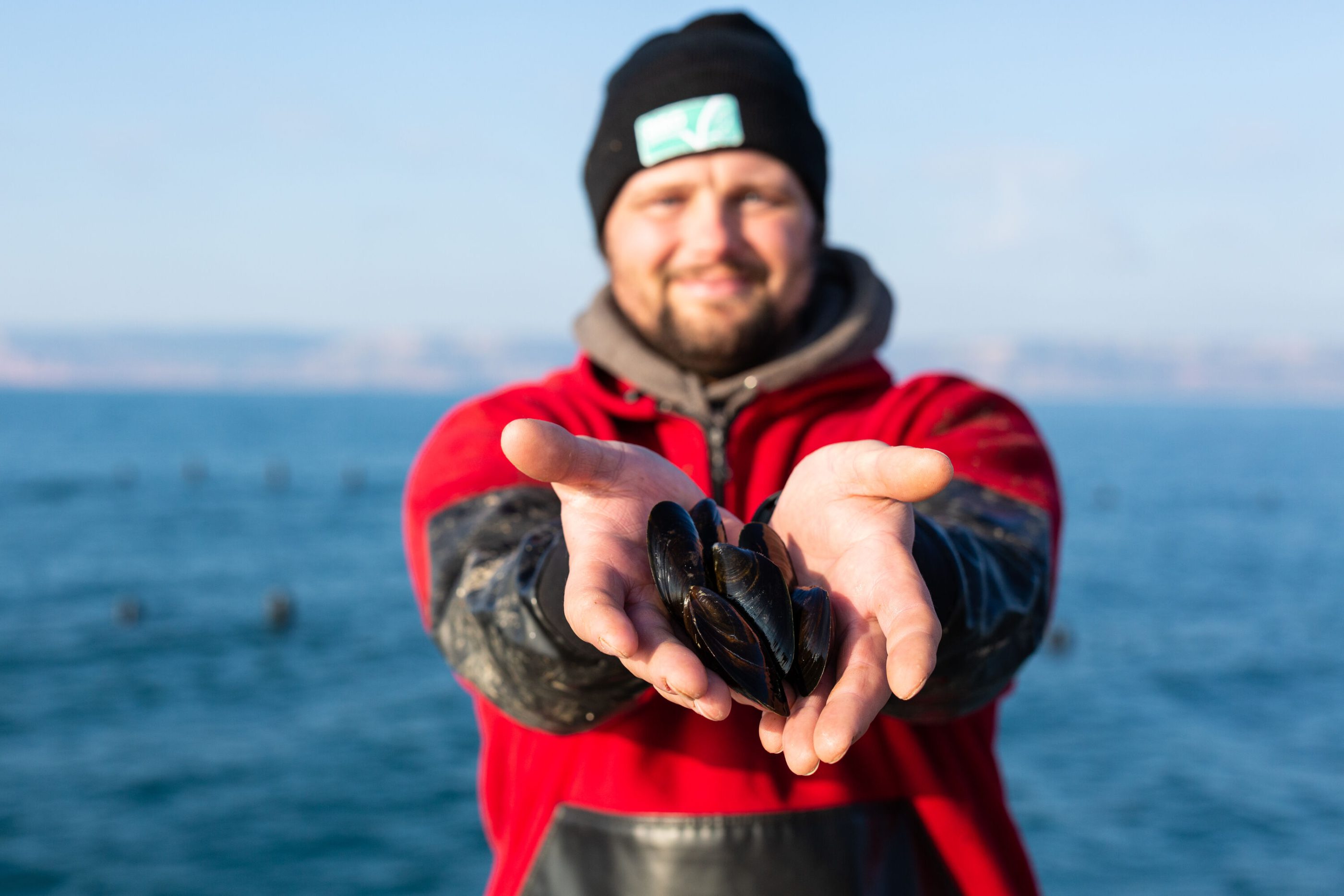
Have you heard these five myths about salmon farming? Here’s the truth behind them…
December 8, 2021
There are plenty of criticisms out there of salmon farming, claiming it is bad for the environment. At ASC we don’t pretend any kind of fish farming is totally free from impacts – no food production is – and it’s exactly these impacts that form the basis of the many requirements in our strict standards for responsible farming. But we are also an evidence-based organisation: everything we do needs to be backed up by science. So when we see some criticisms of salmon farming that seem a bit, well, fishy, we feel we should set the record straight. Here are some of the myths we’ve seen about salmon farming recently:
Myth: it takes five kilos of wild-caught fish to produce one kilo of salmon
This number has been circulating for almost as long as salmon farming has been an industry, and even though it’s incredibly outdated it just keeps reappearing. According to the Marine Ingredients Organisation IFFO, on average, less than a kilo of wild fish is needed. They have also found that around a third of the fishmeal or fish oil comes from by-products – bits of the fish that would otherwise be thrown away. Overall, the majority of feed comes from other sources, mostly land based. This myth is particularly unhelpful because it moves the focus away from these other feed ingredients, that also have environmental and social impacts, like soy. That’s why ASC’s Feed Standard requires that all ingredients are responsibly sourced, whether they’re from sea or land.
 Dodgy claims about fishmeal can distract from the impacts of other feed ingredients
Dodgy claims about fishmeal can distract from the impacts of other feed ingredientsMyth: farmed salmon gets its pink colour from injections
Wild salmon is pink simply because of a pigment that happens to be in the food they eat. Similar pigments may be added to the feed used by salmon farms – the use of food colouring is widespread and uncontroversial in many food products. There are no injections, and the salmon is getting its pink colour from the food it eats, as wild salmon do. ASC certification ensures that any such addition to the feed must not harm the fish or environment.
Myth: eating farmed salmon isn’t as healthy as wild
Any such generalisations about the nutritional benefits of food should be treated with caution. One recent study of various farmed and wild salmon products of different species in Canada found that they all surpassed the government’s minimum daily recommended dose of Omega-3 fatty acids EPA and DHA. For many other attributes such as protein and fat there were indeed differences between wild and farmed, and in some cases the differences between different species were more significant than the differences between farmed and wild. The authors concluded: “farmed Atlantic salmon may be the most convenient and affordable option for the nutrient density it provides, especially for consumers who regularly include salmon in their daily meals.”

Myth: farmed salmon are pumped full of antibiotics
The misuse and overuse of antibiotics are fundamentally important issues that must be tackled. Thankfully, many salmon farms (including all ASC certified farms) do not use antibiotics preventatively, or to promote growth, or for any other unnecessary reason. Instead, they focus on preventative health care – keeping the fish healthy before they get sick. The results of preventative action are evident in the Norwegian salmon industry: a concerted effort to use vaccines and other preventative methods meant that by 2011 an academic paper found that just 0.03% of the produced biomass of the Norwegian industry was treated with antibiotics. And they have kept on improving since then: the industry recently announced that 2020 saw their lowest ever use of antibiotics.
Myth: salmon is only produced by huge companies that don’t care about the environment
We can’t speak for every salmon producer out there, but we know that those that have chosen to apply for ASC certification certainly care about the environment. It’s not possible to pass the strict multi-day audits against the ASC Salmon Standard without caring about your environmental and social responsibilities. The salmon industry is diverse, and yes, it includes some very big companies as well as smaller ones. At ASC we’re more interested in how these companies manage their farms than how big they are. But we do think it’s important to work with large producers, who can affect so much change when they see the benefits of responsible farming, and whose investments in new technologies can benefit the whole industry, and environment. And if you still think salmon farmers don’t care about their environments or communities, you should meet Rosie Curtis. She is passionate about looking after the salmon in her farm, and just as passionate about giving back to her local rural community in western Scotland, where she is a retained firefighter and member of the coast guard team.






